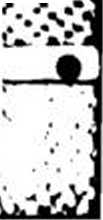6926475951

84-1605
Steady and Tran sień t Ttiming of Tractor-Semitrailer and Truck-Trailer Combinations: A Linear Analyśs (Stationir- und IJbergangsyerhalten voti Sattel* und Lastzugen bei der Kreiafahrt: Lineare Berechnungen)
F. Vlk
Technical Institute of Bern. Obrśncu miru 65. CS-602 00 Brno. Czechoslovakia. N/ehicle Syst. Dynam.,
22 (6), pp 331-350 (Dec 1983) 14 figs. 2 tables,
23 refs
(In German)
Key Word*: Railroad trains. Noise prediction
The contribution of line-haul raił traffic to community noise levels can be quantified by train*' single-event noise expo$ure levels, Senel, at noise-*ensitive waysids location* such as resłdence*. The cumulative effect of a day's operations can be assessed. under ICC guidelines. by the change in day-night noise level. Lrfn. associated with proposed changes in operations.
Kay Word*: Articułated yehicles. Ride dynamie*
A słmplif iad analysis is madę of the yaw stability and control of two typa* of commerciel vehicle combinations (tractor-samitrailer. truck-trailer) at a constant forward yeloerty during steady and transient turning. The combinad vehicle is traatad as a linear dynamie system. The steer angle at the front wheels of the tractor (or truck) and the steady-state rasponsas of the road vehicle train (yaw rata, articulation angtes and sklesiip angle) are calcutoted. Expłoratory calcu-latlons ara parformed to determine the influence of the cornering stiffness of the tire* for the two types of the vahicla combinations upon the steady-state responses.
84-1606
Basic Analytical Results for Lateral SUbflity of Car/Trailer Systems
J.C. Huston and D.B. Johnson
Iowa State Univ.# Ames. IA. SAE Paper No. 820136
(SP-509)
Kay Words: Trucks, Articułated vehiclas, Lateral response
Basic analytical results for car/trailer lateral stability ara devełoped. These results are yalidated by comparing crKical spaads pradictad by the new analytical solution wkh those obtainad numerically using a standard eigenvelue technique. General obsarvations ba sad upon the analytical results are presented.
84-1608
Yibration Modes of a 70-Ton Boxcar
C.L. Orth and G. Kachadourian Fed. Railroad Admn., Washington, DC 20590. J. Engrg. Indus.. Trans. ASME. 106 (1). pp 21-27 (Feb 1984) 18 figs. 4 tables. 4 refs
Key Words: Railroad cars, Freight cars, Experimental modal analysis. Modę shapes
Vibration test* were parformed on a 70-t boxcar both empty and fully loaded, with two packaging configurations. Ninę yibration modes were identifisd: first roli, second roli, yaw, bounce, pitch. body torsion, body bending, and two iading modes. The effect of friction snubbing, gros* weight. and amplitudę of motion input at tha rails was determined. Test results presented are a summery of modal frequencies, the deflections associated with each modę and the rangę of fre-gueocy variation.
84-1609
Stiffness and Friction Force Measuranents on a Freight Car Truck from Qua w-Static Tests
G. Kachadourian, C.L. Orth, and D.W. Inskeep The MITRĘ Corp., J. Engrg. Indus.. Trans. ASME, 106(1),pp 16-20 (Feb 1984) 15 figs
Key Words: Vibration tests. Railroad cars, Freight cars. Stiffness coefficients. Friction excitation, Experimental data
84-1607
Yalidation of Computer Prediction of Train Pasrf>y Noi*e-Exposure Lerds
J.M. Hague III
Buffalo, NY, ASME Paper No. 83-WA/NCA-6
A conventionsl three-plece truck with load sensitive friction snubbing was tested as a oomplete assembly with its wheals resting on a flxed section of raił and with łoads appliad through a fłxture that dupiicatad the body bolster at the truck bolster interfsee. The purpose of tha testing was to determine tha stłffness and friction forces of the truck under yertical, lateral, and roli moment loading condrtion*. Loads were yaried to cover a ranga of car gross weight conditions.
49

vv

Wyszukiwarka
Podobne podstrony:
84-1738 Yibration and Subility of Orthotropie CircuUr Cylindricai Shells Subjected to Axial Load G.
84 (32) knots and couching to fluffy Lana tl NEEDLE BOOK Tracę lettering on to the right side of a13
84-1655 Theoretical and ExperimenUl Dynamie Stall Investi-gations on a Rotor Blade Tip W. Geissler D
IMAG0151 (10) In this condition the indicator Circuit causes the LED to remain steady and the buzzer
biulet^Cisza po burzy"Weil l m grinding my life out, steady and surę Nothing morę wretched than
19 BOOKS AND PAMPKLETS :ard Theory of aeroplane structural members subjected to co
SYNTAX - part of grammar next to morphology, phonology, and semantics o studies combining words, how
76262 skanowanie0007 (84) Richards, J., Platt, J., Weber, H. 1992. Longman Dictionary of Applied Lin
84 3 # APF-8-1 p. 01d4ilccHS Prtile Tashions O8A1. KEPRODUCTIOS OF ORANCL* DLOSSOM T. 26 EAKES BOOK
84 5c90f6ee81 INSPECTIOIM AND REPAIR 5. Measure: •Piston-to-cylinder clearance Pisto
biulet^Cisza po burzy"Weil l m grinding my life out, steady and surę Nothing morę wretched than
biulet^Cisza po burzy"Weil l m grinding my life out, steady and surę Nothing morę wretched than
dsc08817 (3) TABLE 17.2 Seleeted Occurronecs of Flimal ichnofaunas. Only Papers that Combined Ichnot
P5140055 1Medial and Literał Epicondylitis Combination Taping The practitioner may desire to use a c
IMAG0775 f v«lu.tic ihe fbllowing project using «*n IRR crii«rioH, bn*ed o tran opportunity cost of
ProgramProdukcjiSTAR14 PODWOZIA POD ZABUDOWĘ I CIĄGNIKI CHASSIS FOR SPECIAL-PURPOSE N/EHICLES AND TR
więcej podobnych podstron